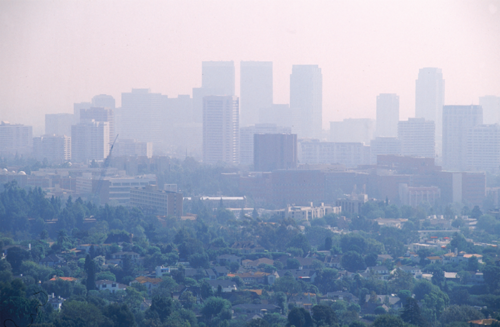AS Level Chemistry 9701
12. Nitrogen and sulfur
Written by: Pranav I
Formatted by: Pranav I
Index
12.1 Nitrogen gas
- In Group 15
- A non-metallic element which makes up about 78% of the Earth’s atmosphere
- Exists as N2 in the atmosphere
- Unreactive → dilutes the effect of the reactive oxygen gas
- In N2, the N atoms are bonded by a triple covalent bond
- Very strong → bond energy is almost 1000 kJmol-1
- Nitrogen and oxygen react together in extreme conditions (e.g. during thunderstorms)
- The oxidation of N2(g)
\[
\begin{aligned}
1. &\ \text{N}_2(g) + \text{O}_2(g) \rightarrow 2\text{NO}(g) \quad \text{Nitrogen(II) oxide} \\
\\
2. &\ 2\text{NO}(g) + \text{O}_2(g) \rightarrow 2\text{NO}_2(g) \quad \text{Nitrogen(IV) oxide} \\
\\
3. &\ 2\text{NO}_2(g) + \text{H}_2\text{O}(l) + \frac{1}{2}\text{O}_2(g) \rightarrow 2\text{HNO}_3(aq) \quad \text{Nitric acid}
\end{aligned}
\]
12.2 Ammonia and ammonium compounds
- Ammonia, NH3, is produced on a large scale using the Haber process
\[
\text{N}_2(g) + 3\text{H}_2(g) \rightleftharpoons 2\text{NH}_3(g) \quad \text{(Fe catalyst, 450°C, 200 atm)}
\]
- Ammonia has a pyramidal shape with a bond angle of 107° due to its single lone pair
- The lone pair can form a dative bond with H+ to form the ammonium, NH4+, ion
- The positive charge is evenly spread over the whole ion
The basicity of ammonia
- In the below reaction, ammonia is a Bronsted-Lowry base (proton acceptor)
\[
\text{NH}_3(aq) + \text{H}^+(aq) \rightleftharpoons \text{NH}_4^+(aq)
\]
- Ammonia is a weak base → establishes an equilibrium mixture in an aqueous solution
- The position of equilibrium is well over to the left → greater concentration of ammonia molecules
- Ammonium salts react with bases
- Type of reaction: acid-base (NH4+ acts as the acid and OH– acts as the base)
- General reaction: ammonium salt + base → salt + water + ammonia
- 2NH4Cl(aq) + Ca(OH)2(s) → CaCl2(s) + 2H2O(l) + 2NH3(g)
- Conditions: heat
12.3 Nitrogen oxides in the atmosphere
- Nitrogen is oxidized by lightning during a thunderstorm to form gaseous nitrogen oxides
- Also takes place in the car engine (high temperature and pressure)
- Released into the atmosphere in exhaust fumes and pollute our atmosphere, causing acid rain and photochemical smog
Acid rain
- As stated in 12.1 Nitrogen gas, N2 is oxidized to HNO3 (nitric acid) in the atmosphere
- This dissolves in water droplets in clouds, producing acid rain
- Nitrogen oxides also act as catalysts (e.g. NO2 → regenerated at the end) in the oxidation of SO2 to dilute H2SO4
\[
\begin{aligned}
1. &\ \text{SO}_2(g) + \text{NO}_2(g) \rightarrow \text{SO}_3(g) + \text{NO}(g) \\
\\
2. &\ \text{NO}(g) + \frac{1}{2}\text{O}_2(g) \rightarrow \text{NO}_2(g)
\end{aligned}
\]
- Formation of H2SO4(aq) from SO3(g)
\[
\text{SO}_3(g) + \text{H}_2\text{O}(l) \rightarrow \text{H}_2\text{SO}_4(aq)
\]
Photochemical smog
- Primary pollutants are given off directly from the source of pollution
- E.g. nitrogen oxides, volatile organic compounds (VOCs)
- Secondary pollutants are not given off directly from human activity and are formed via reactions of primary pollutants
- E.g. peroxyacetyl nitrate (PAN)
- Volatile organic compounds (VOCs) are largely unburnt hydrocarbons from fuel
- React in sunlight with oxides of nitrogen to make peroxyacetyl nitrate (PAN)
- This is a photochemical reaction
- PAN also affects the lungs and eyes, and in high concentrations, it also affects plant life

Reducing the effects of nitrogen oxides
- Using catalytic converters to reduce the pollutants from motor vehicles
- Reactions of pollutant gases inside the converter take place on the surface of the hot catalyst (e.g. platinum, rhodium)
\[
\text{2CO}(g) + \text{2NO}(g) \rightarrow \text{2CO}_2(g) + \text{N}_2(g)
\]

